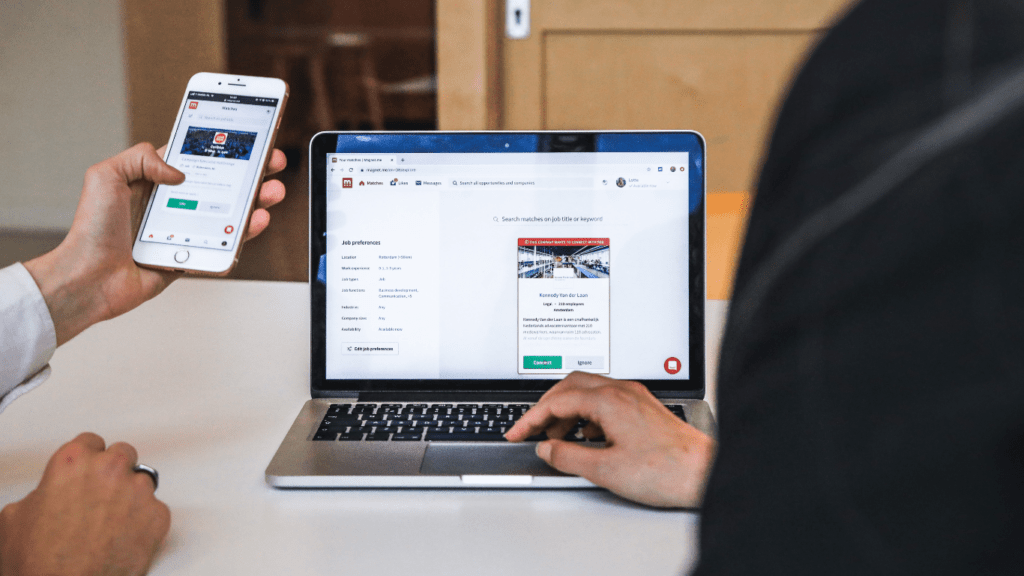Why Device Security Matters
Device security plays a crucial role in protecting personal and sensitive information. Breaches can lead to identity theft, financial loss, and privacy violations. Cyberattacks target various devices, including smartphones, laptops, and tablets.
Identity Theft Prevention
Devices store personal data, such as social security numbers and bank details, which cybercriminals can steal if security measures are weak. Strong device security helps prevent unauthorized access to this information, reducing the risk of identity theft.
Financial Protection
Financial transactions, like:
- online banking
- shopping
expose sensitive financial information. Inadequate security can result in cybercriminals intercepting these transactions and committing fraud. Additionally, compromised devices can be used for unauthorized purchases or fund transfers.
Privacy Maintenance
Stored data, including photos and messages, can be accessed by unauthorized parties if devices are not secure. Effective security prevents this and maintains individual privacy. Secure devices ensure that personal conversations and media remain confidential.
Protection Against Malware
Malware, such as viruses and ransomware, can cause significant damage to devices and data. Malware can corrupt files, steal information, and even render devices unusable. Implementing robust security measures ensures that devices are safeguarded against various malware threats.
Professional and Business Security
Work devices store critical business information, such as trade secrets and customer data, which, if compromised, can lead to severe business repercussions. Proper device security helps maintain business integrity and protects sensitive professional information.
Network Security
Compromised devices can threaten the security of an entire network. Infected devices can spread malware to other connected devices, undermining the overall network security. Ensuring each device is secure helps maintain the robustness of the wider network infrastructure.
Child Safety
Children often use devices to access educational resources and entertainment. Proper security settings can protect children from inappropriate content and cyberbullying. Securing devices ensures that children have a safe online experience.
Maintaining device security is essential for safeguarding personal, financial, and professional information. Comprehensive security measures mitigate risks associated with cyberattacks, protecting both individuals and businesses from potentially devastating consequences.
Common Types of Viruses
Understanding the various types of viruses is crucial to keeping devices safe. Different viruses have distinct characteristics and impacts.
Malware
Malware refers to any software designed to harm, exploit, or otherwise compromise a device. Common malware examples include Trojans and worms. A Trojan appears as legitimate software but carries destructive payloads; worms replicate themselves to spread across networks. Effective anti-malware software and updated security patches are essential for protection against malware.
Spyware
Spyware secretly monitors and collects information about a user’s activities. Examples include keyloggers, which capture keystrokes, and adware, which tracks browsing habits. Because spyware often goes undetected, regularly running anti-spyware tools is necessary. Users should be cautious when downloading software from untrusted sources to avoid accidental spyware installations.
Ransomware
Ransomware encrypts a user’s data and demands payment for the decryption key. Examples are CryptoLocker and WannaCry, both of which caused significant financial losses. To mitigate ransomware threats, users should regularly back up important data and use robust security practices. Avoiding suspicious email attachments and keeping software up-to-date reduces the risk of ransomware attacks.
Best Practices for Device Safety

Keeping devices safe from viruses requires adopting key practices that significantly reduce the risk of cyber threats.
Regular Software Updates
Software updates are crucial for device safety. Patching security vulnerabilities keeps systems guarded against new and existing threats. Enable automatic updates for operating systems, applications, and security software to ensure timely protection. Regular updates prevent exploits by addressing known weaknesses.
Use Strong Passwords
Strong passwords offer essential protection for accounts and devices. Create passwords with at least 12 characters, using a combination of letters, numbers, and special symbols. Avoid using easily guessed information like birthdays or common words. Password managers help generate and store complex passwords securely. Regularly update passwords to enhance security.
Enable Two-Factor Authentication
Two-factor authentication (2FA) adds an extra security layer. It requires not only a password but also a second form of identification, like a code sent to a mobile device. This reduces the risk of unauthorized access even if passwords are compromised. Enable 2FA for accounts and services that offer it to maximize protection.
Antivirus Software
Antivirus software is essential for protecting devices from malicious attacks. It actively scans and removes harmful software to maintain device security.
Free vs. Paid Options
Free antivirus options offer basic protection suitable for casual users. They provide essential features like virus scanning and threat detection but often lack advanced tools. Examples include Avast and AVG.
Paid antivirus options deliver comprehensive protection ideal for heavy users or businesses. These versions offer advanced features like real-time scanning, firewall protection, and phishing safeguards. Examples include Norton and Bitdefender.
Key Features to Look For
- Real-time scanning detects threats as they occur, ensuring immediate protection. This reduces the risk of infections and compromised data.
- Automatic updates keep the software up-to-date against new threats. Regular updates improve the software’s effectiveness in recognizing emerging malware.
- Firewall protection monitors incoming and outgoing network traffic. It acts as a barrier against unauthorized access, enhancing overall device security.
- Phishing protection identifies and blocks malicious websites. This feature safeguards against fraudulent attempts to steal personal information.
- Behavior-based detection analyzes software behavior to identify new, unknown threats. It improves the antivirus’s ability to detect and prevent zero-day attacks.
By selecting antivirus software with these features, you can ensure robust protection against a wide range of cyber threats.
Safe Browsing Habits
Understanding safe browsing habits helps keep your devices protected from viruses and cyber threats.
Avoiding Suspicious Websites
Avoiding suspicious websites reduces the risk of encountering malware. When a site looks untrustworthy or asks for unnecessary personal information, I leave immediately. Legitimate websites typically have secure URLs, starting with “https://”. Look for embedded security certificates, like the padlock icon in the address bar, to ensure authenticity. If a popup or an ad seems too aggressive or strange, it’s best to avoid interacting with it. I use browser extensions like ad blockers to minimize risky interactions.
Recognizing Phishing Scams
Recognizing phishing scams prevents identity theft. Phishing emails often mimic legitimate communications but contain subtle errors such as typos, incorrect logos, or unusual URL links. If I receive an unexpected email requesting personal information, I verify the sender’s authenticity before responding. Hovering over links in emails without clicking reveals the true destination URL, which helps identify fraudulent sites. I also enable email filtering tools that flag potential phishing attempts, ensuring safer browsing experiences.
Backing Up Your Data
Data backups are crucial for device safety and security. Regular backups ensure you can recover essential information in the event of a virus attack.
Cloud Storage
Cloud storage offers an effective way to back up data. Services like Google Drive, Dropbox, and iCloud provide secure storage options. Cloud solutions automatically sync files, ensuring the most recent versions are always backed up. Many providers offer encryption, adding an extra layer of security. It’s important to choose a reputable service with strong data protection policies.
External Hard Drives
External hard drives provide a physical backup solution. Store copies of important files on devices like SSDs or traditional hard drives. Regularly update these backups to maintain data currency. Pairing external drives with reliable backup software can automate the process, reducing the risk of human error. Keep drives in a safe, secure location to prevent physical damage or theft.





